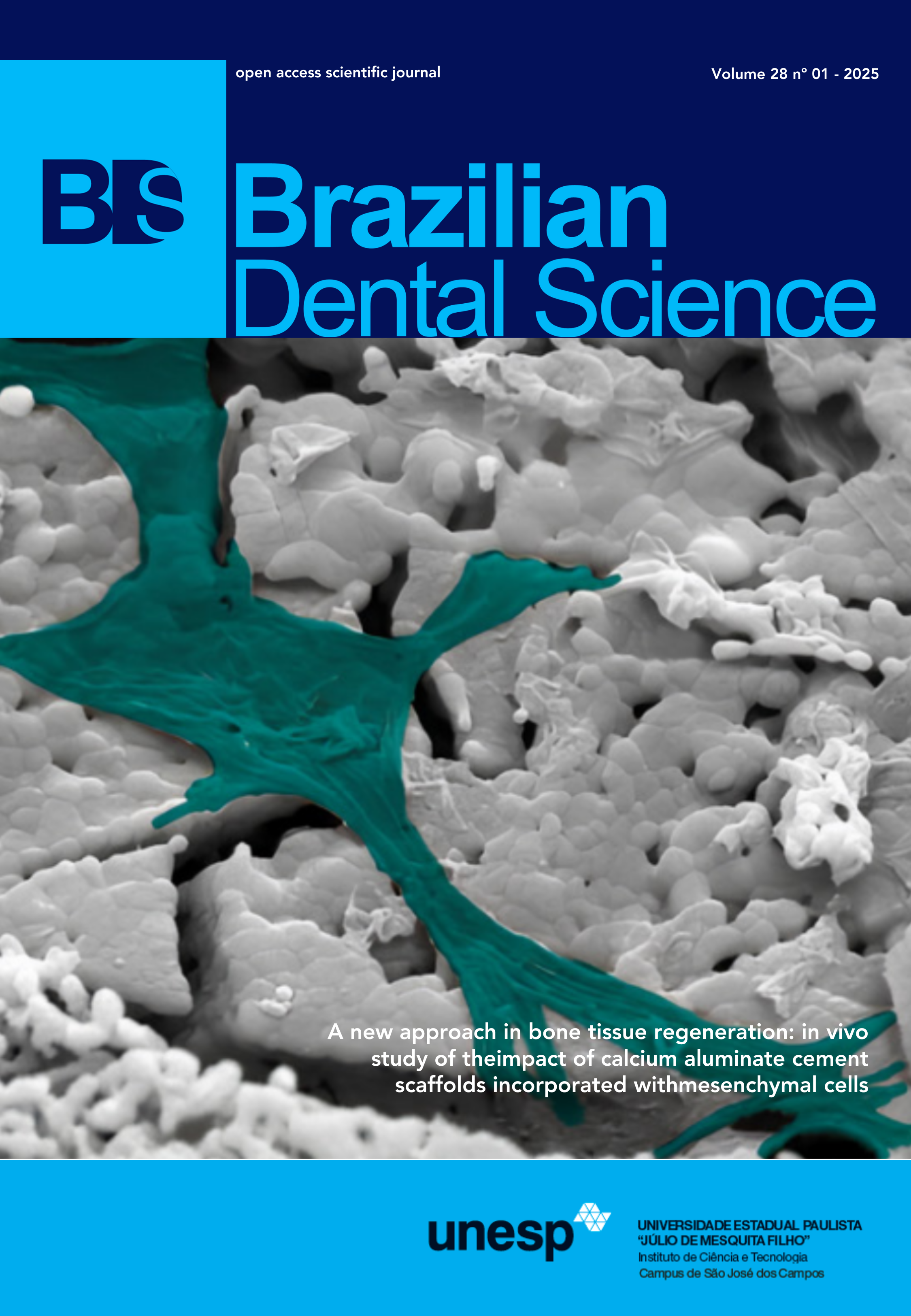Effect of angulation of 3D printed resin provisional bridges: an in vitro study on hardness and fracture loading
DOI:
https://doi.org/10.4322/bds.2025.e4581Resumo
Objective: to evaluate the effect of printing angle of three-dimensional (3D) printed resin temporary bridges, through an in vitro study on hardness and fracture loading. Material and Methods: Specimens fixed bridges with three elements (N=5) and block specimens (N=1), were distributed among the experimental groups based on different printing angles: 0°, 45°, and 90°. Surface analysis using a scanning electron microscope (SEM) was conducted on one specimen from each experimental group. Hardness testing was then performed, with the specimens receiving five measurements on a Vickers microhardness tester and for fracture loading testing, force was applied using a piston attached to a testing machine. Finally, the bridge specimens were evaluated for fracture. Fracture loading and hardness data were subjected to a Anova 1 Factor statistical test (p<0.05), while the findings from surface analysis and fractures were analyzed qualitatively. Results: On the surfaces of the specimens, printing layers were mainly observed in the 90° group for block-type specimens. For hardness analysis, the 3D printing angle showed statistical significance between groups (P=0.000), while no significant difference was found for fracture loading (P=0.177). Finally, there was a prevalence of all failures for the 0° and 90° groups and retainer fracture for the 45° group. Conclusion: Different angles of provisional bridges manufactured by 3D printed resin affect hardness, but do not interfere with fracture loading.
KEYWORDS
Angulation; Dental prosthesis; Digital technology; Provisional bridges; Three-dimensional printing.
Downloads
Downloads
Publicado
Como Citar
Edição
Seção
Licença
Copyright (c) 2025 Brazilian Dental Science

Este trabalho está licenciado sob uma licença Creative Commons Attribution 4.0 International License.
TRANSFERÊNCIA DE DIREITOS AUTORAIS E DECLARAÇÃO DE RESPONSABILIDADE
Toda a propriedade de direitos autorais do artigo "____________________________________________________________________" é transferido do autor(es) para a CIÊNCIA ODONTOLÓGICA BRASILEIRA, no caso do trabalho ser publicado. O artigo não foi publicado em outro lugar e não foi submetido simultaneamente para publicação em outra revista.
Vimos por meio deste, atestar que trabalho é original e não apresenta dados manipulados, fraude ou plágio. Fizemos contribuição científica significativa para o estudo e estamos cientes dos dados apresentados e de acordo com a versão final do artigo. Assumimos total responsabilidade pelos aspectos éticos do estudo.
Este texto deve ser impresso e assinado por todos os autores. A versão digitalizada deverá ser apresentada como arquivo suplementar durante o processo de submissão.




























